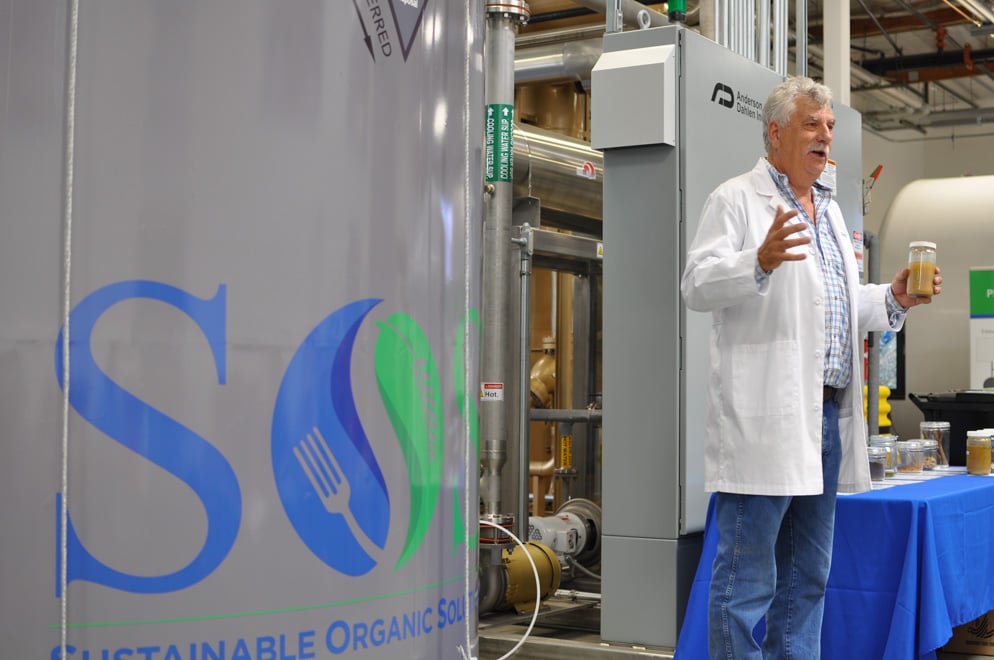
During this coming school year, and possibly by the end of the month, a large proportion of Stanford’s food waste will be sent to an innovative new reprocessing system operated by Sustainable Alternative Feed Enterprises (SAFE). The system recycles food waste into usable water, animal food and biofuel ingredients.
The new system, whose operators say is the first commercially viable version of its technology in northern California, is expected to provide a less expensive alternative to competing food waste processing options such as composting or anaerobic digesters. Louie Pellegrini, a senior official in SAFE, said that the capital costs associated with creating these new units are a third as expensive as competing methods and generate outputs that are four times as valuable as the competing methods.
After the food waste has been screened for contaminants like glass or plastic and has been initially processed, it generates a “mash” that is highly acidic and extremely pungent. However, due to its high acidity, it does not decompose normally and therefore does not generate methane. The water is then expelled from the mash, and the dry mash remainder is sterilized and has its fats, oils and grease removed. Finally, the remaining product is further processed to make it an ingredient for animal food.
Stanford is serving as one of the first customers for the corporation operating the system and has already been providing food waste on an intermittent basis as the technology was being perfected.
Michael Rohrs, the director of support services at Stanford University’s Land, Buildings & Real Estate, explained that the new food waste processing facility will allow Stanford’s food waste to be processed on a higher level of the federal Environmental Protection Agency’s Food Recovery Hierarchy. According to the hierarchy’s pyramid, if food waste cannot be used to feed people, the next best option is to repurpose it for animal food.
Rohrs also said that although Stanford will not immediately save money under this new waste process, it might lead to lower bills in the future.
Creg Shaffer, president of SAFE, said that the process could be scaled up to handle food waste for San Jose. Shaffer also hopes that the project will change how people look at food waste.
“We don’t think that food should be waste unless a person or animal eats it,” Shaffer said.
Dorsey Moore, the executive director and CEO of the San Jose Conservation Corps and Charter School, attended SAFE’s presentation for local officials to learn about their new process. Moore was impressed by the new method and wants to work with his clients to encourage them to participate in the project.
“This is fabulous, as Louie [Pellegrini] said, this is game-changing type [stuff],” Moore said.
The animal food generated by the plant is mixed with traditionally produced animal food and can then be sold. Pellegrini said that dogs have been quite fond of the new food, describing it as “crack cocaine” for dogs.
Although the new process is well-suited for food waste, it does not deal as well with yard waste like leaves or grass and therefore is not being used to process green waste from locations where yard waste and food waste are mixed. Work to prepare the plant for full operations is ongoing, but the bulk of Stanford’s food waste could be processed through the plant as soon as the end of the month.
Contact Caleb Smith at caleb17 ‘at’ stanford.edu.
An earlier version of this story misspelled Creg Shaffer’s last name. The Daily regrets this error.
